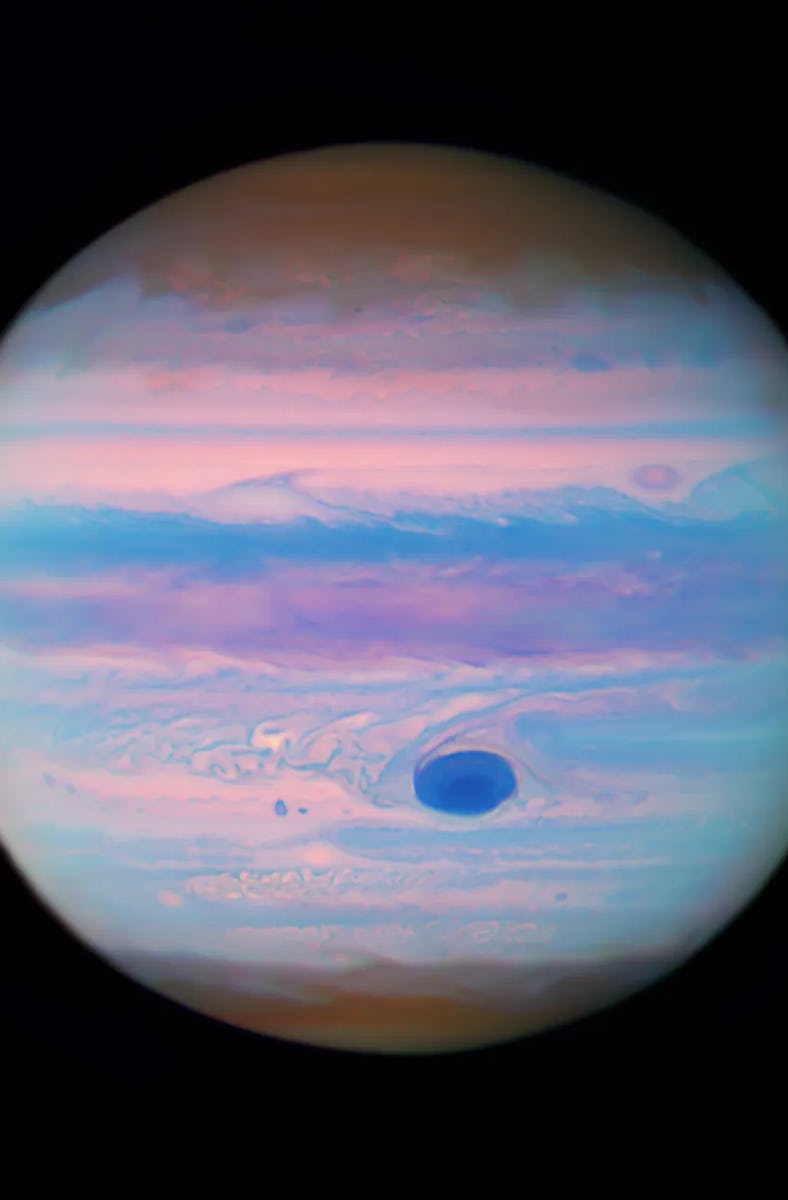Jupiter Resembles A Giant Bubblegum Ball In Hubble’s New Ultraviolet Image
The gas giant’s candy-colored look turns its Great Red Spot a dazzling blue.

While this multi-hued orb looks like a delectable gumball from a quarter machine outside your grocery store, it’s actually the gas giant Jupiter in ultraviolet disguise.
This week NASA is celebrating Jupiter’s opposition in the night sky (when the Sun and the planet are opposite each other in relation to Earth) by publishing a fascinating UV image of the Jovian giant. Courtesy of the Hubble Space Telescope, this photo takes a candy-colored departure from what the planet usually looks like in visible light because the image showcases ultraviolet data that’s usually imperceptible to the naked eye. Because our eyes can’t see UV, experts process the image using colors in the visible spectrum assigned to certain UV filters (in this case, Blue: F225W, Green: F275W, and Red: F343N), which captures the complex science at work while also creating a truly otherworldly image.
According to Hubble researchers, ultraviolet wavelengths reveal how sunlight makes certain minerals glow, and NASA says this short, high-energy wavelength can also display “fascinating cosmic phenomena,” including the evolution of galaxies as well as light from hot, young stars. The Jovian image published on Friday comes from data gathered while Hubble was studying Jupiter’s superstorm clouds. “The researchers plan to map deep water clouds using the Hubble data to define 3D cloud structures in Jupiter’s atmosphere,” NASA says.
An ultraviolet view of the Solar System’s largest gas planet.
Tucked among Jupiter’s dreamy, cotton-candy stripes is a striking royal-blue gem. This is a UV version of Jupiter’s famous Great Red Spot — a persistent, anticyclonic storm 1.3 times the diameter of Earth that produces winds around 580 miles per hour. The largest storm in the Solar System, this Not-So-Red Spot (at least in this image) is saturated blue as high-altitude haze particles absorb light at this wavelength.
Hubble has been peering into the depths of our Solar System (and far, far beyond) since 1990, and even produced a similar ultraviolet view of Saturn back in 2003. But even with the arrival of its better-equipped descendant — the James Webb Space Telescope — Hubble’s mission is far from over. In the past few months, the aging telescope has glimpsed the expanding bubble of a supernova, peered into a “beehive” of hundreds of thousands of stars in the Milky Way, and watched clouds disappearing on Neptune.
But during that long stargazing mission, Jupiter has often been the subject of its multi-spectral gaze. “From the Comet Shoemaker-Levy 9 impacts to studying Jupiter’s storms, Hubble’s decades-long career and unique vantage point provide astronomers with valuable data to chart the evolution of this dynamic planet,” NASA says.
And that mission continues.